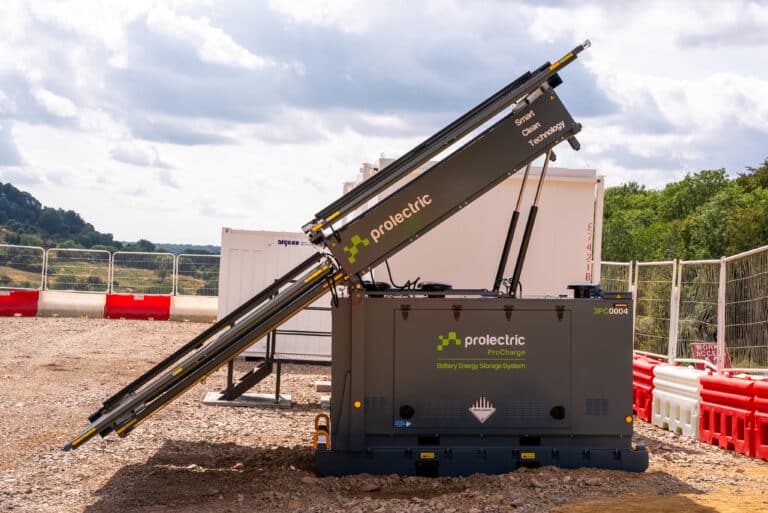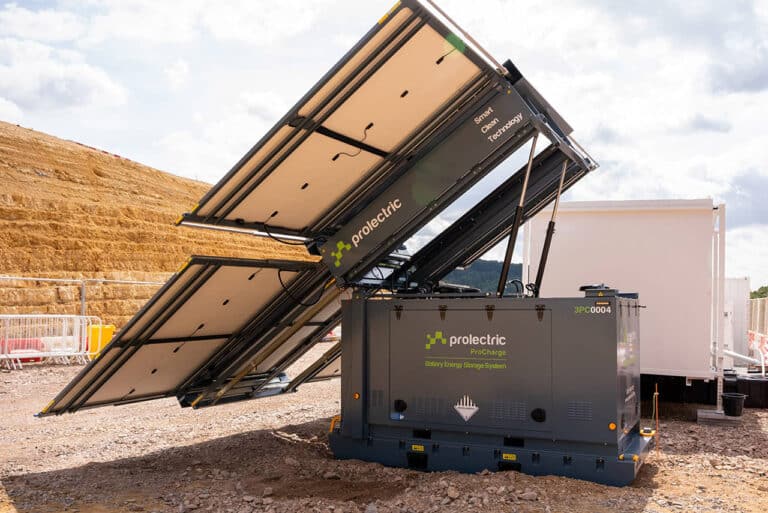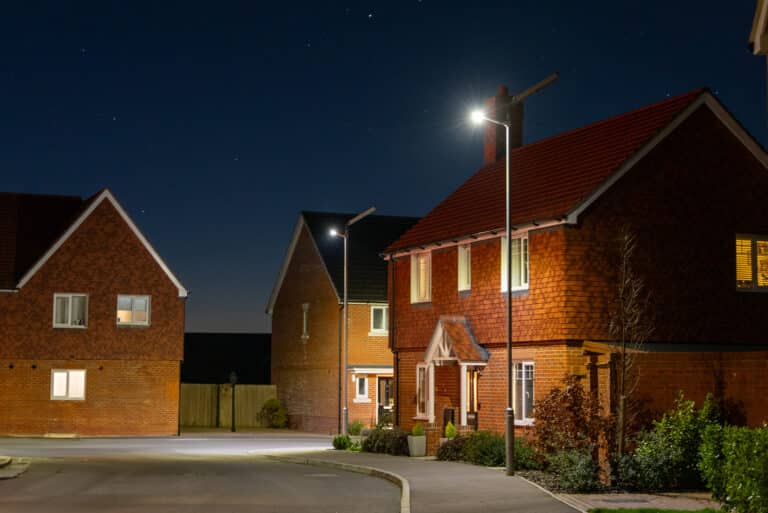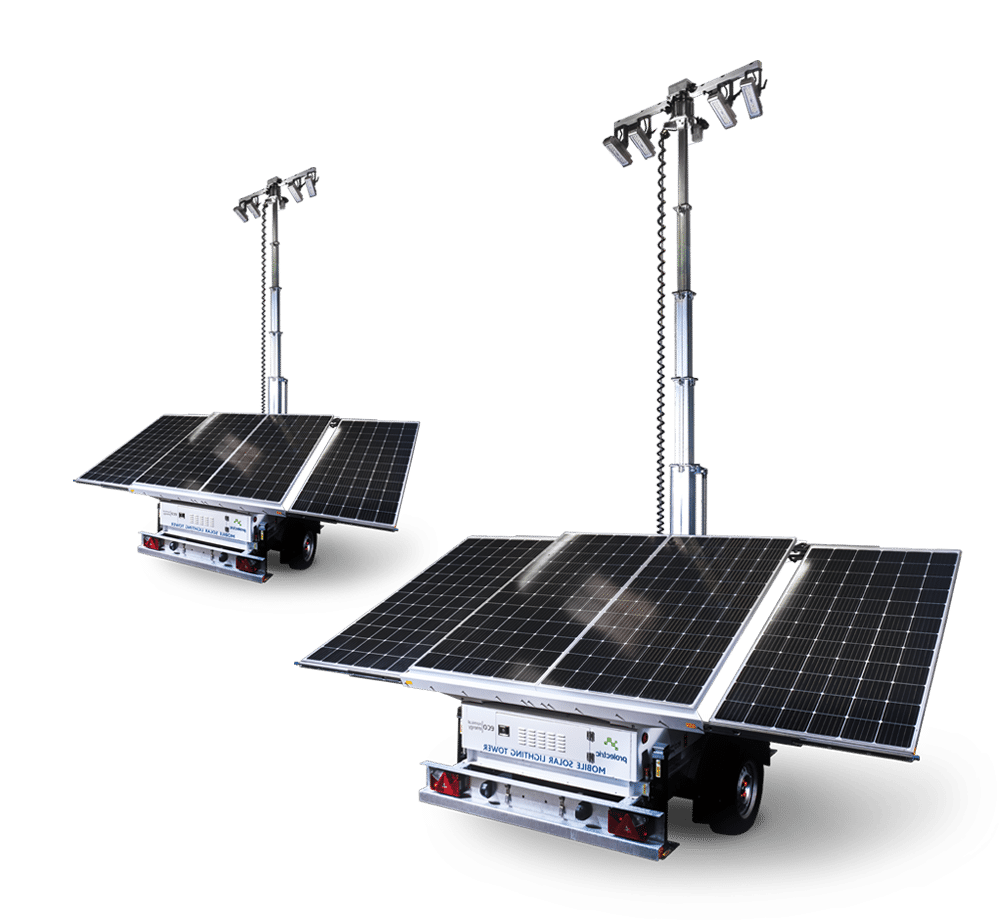Diesel generators are doomed.
It may not be obvious when you visit a construction site and hear generators roaring away in the background, but new sustainable options are slowly but surely gaining ground.
It’s clear that things need to change. Concerns about emissions are pushing the industry towards cleaner alternatives, but construction can be slow to change old habits. And therein lies the problem: things are changing but not fast enough to help mitigate the climate change challenges that we are facing globally. Recently the Construction Leadership Council has published its objective to get the constructions industry’s best 500 firms to eliminate diesel generators from their sites by 2025. This to support their target to reduce diesel consumption on sites by 78% by 2035.
One reason for the slow move away from diesel may be a perception that sustainable power technology is an area that is still evolving and that the time is not yet right to invest in new plant equipment. However, this is outdated when it comes to solar, which is now a mature technology. Over the past 5 years or so off-grid units including solar hybrid generators and tower lights have had significant upgrades to ensure they can work on sites throughout the UK, even in the depths of winter.
Rachel Preen, MD at Prolectric “The narrative that solar is a developing technology simply doesn’t hold water anymore. As the first to market, our solar generators are tried and tested, offering reliable power options onsite and off-grid that are demonstrably saving companies substantial money in the long run.”
Another reason may be the old adage: if it ain’t broke, don’t fix it. But diesel generators are broken; they are responsible for a significant amount of the 6m tonnes of CO2e emitted in the UK construction industry every year and therefore are a major factor in a construction site’s carbon footprint. What’s more, on a local level they’re noisy and dirty – the neighbours definitely don’t like them and the operators working in close proximity surely don’t like breathing the fumes.
The final reason for delaying the move away from diesel may be concerns about cost. Aren’t solar generators expensive? While it is true that the initial outlay is greater than for diesel generators, solar generators like the ProPower work with zero or little fuel and minimal maintenance, meaning huge cost savings when everything is considered. As diesel prices continue to rise, the savings from free fuel only get larger. Using our advanced telematics, we know exactly how often each of our generators has run on the solar, battery and back-up generator. Using this information, we are able to define exactly how long a return on investment takes. On average, across the ProPower fleet the cost of a solar hybrid generator vs a traditional diesel option will be neutral after 2 years and 4 months and after 5 years the unit will have saved the customer over £50k, and an extra £18k every year thereafter.
The UK Divisional Manager for Renewables at Nixon Hire said “We installed our first ProPower at the beginning of June 2022, and the backup generator didn’t run once in the first month. Customers are seeing savings of up to £6.5k per month per unit on fuel alone. We can map their load profile and turn things on and off remotely for the customer so it’s all running as optimally as possible. It’s very efficient compared to the traditional diesel generators used for these functions. Also, compared to the old tech, there’s a lot less servicing required because the generator runs less frequently. In July 2022 alone, the ProPower fleet saved Nixon Hire customers over £56,000 in diesel, reduced fossil fuel usage by 29,512 litres and cut carbon emissions into the environment by 79 tonnes!
Solar is not the only sustainable technology bidding to replace diesel, but it is the only mature technology. Below, we examine the alternatives – biomass, hydrogen and power banks – and compare them to solar for construction companies looking to kick the diesel habit.
Solar power
Solar power generation is proven technology that creates electricity directly from sunlight using photovoltaic panels. Today, three-quarters of all new energy generation worldwide is solar and, as costs continue to fall, it is on course to become the main source of power in the world by 2050.
Solar tech is tried and trusted, with modern panels boasting lifespans of up to 40 years. Improvements to both battery and panel technology over the past decade have increased uptake in grid-scale, industrial and home use to the point that it is a setup-and-forget solution.
Advantages
- Zero to very low maintenance required.
- No fuel required and they are entirely free to run.
- Silent operation with no emissions.
- Mature and reliable technology.
- Relatively low upfront costs for sustainable power, much less when hiring.
- Immediate generation of electricity when panels are deployed.
- Can be used completely off-grid with no supporting infrastructure.
- Integrated battery systems ensure power is available at night.
- Compact and towed systems make for easy transportation.
- Integrated telematics software provides remote management and control.
Disadvantages
- Very high-power requirements can be a challenge but this can be overcome by using a backup unit to deploy when during
- Space can be an issue when deploying panels and generators designed without deploying panels can be difficult to transport.
- Crucial to choose a manufacturer with the experience and expertise of making solar systems work in the UK throughout the shorter and rainier days of winter.
- Important to differentiate between ‘moveable’ systems and ‘portable’ systems which can be trailer mounted and moved in minutes.
Biomass generators
Biomass power generation is a method of creating electricity from burning organic matter such as wood chips or pellets. There are several dozen large biomass power stations in the UK, which work like standard power stations – material is burned, heating water to steam, which spins a turbine which, in turn, generates electricity. However, portable biomass generators are in the very early stages of development.
Advantages
- Biomass power generation can be seen as potentially renewable. If the biomass fuel source is replanted or sustainably harvested, it could be considered a renewable energy source.
- In theory, it can use any form of organic matter, even agricultural waste.
Disadvantages
- Biomass technology is not yet mature – and upfront costs are extremely high.
- Operational costs are high – while in theory any organic source can be used to feed the generator, sustainable biomass fuel is needed for it to be considered renewable, which can be difficult to source and transport, as well as being expensive. The transportation of wood pellets to the site may also negate the environmental benefits.
- There are significant maintenance and operation considerations in keeping the generator topped up with fuel and burning efficiently. It can take several hours to start up a biomass generator.
- While biomass generators can be considered carbon neutral in theory, burning biomass fuel does release pollutants like particulate matter, which has been shown to be a significant danger to human health.
- Biomass fuels are far less power dense than diesel or hydrogen, so significantly more material is required to generate the same power. The fuels also require dedicated storage space and handling equipment, adding complexity to site management. Moisture content of the fuel needs to be controlled to ensure efficient combustion.
Hydrogen fuel cells
Hydrogen power utilises hydrogen gas to generate electricity using a fuel cell. Inside the fuel cell, a chemical reaction between hydrogen and oxygen (from the air) generates electricity, with water vapour as the only by-product.
Advantages
- The hydrogen fuel for the fuel cell is created using electricity. If this is green electricity, the hydrogen itself is sustainable.
- Clean and quiet in operation.
- Quick to set up.
- Water vapour is the only by-product onsite.
Disadvantages
- Hydrogen technology is not yet mature and upfront costs are extremely high.
- Operating costs are high – hydrogen is expensive to produce and must be transported to site.
- If the hydrogen for the fuel cell has been created using non-green electricity, it is not a sustainable source of energy, even though its end by-products are minimal.
- Hydrogen technology is in its infancy and infrastructure for transportation and storage is limited.
Electric power banks
Power banks are a familiar technology to most of us. Handheld power banks are great for extending your phone’s life on a day trip to the beach, but are they a suitable alternative for power onsite?
Advantages
- Power banks can be considered green if the electricity used to charge them is sustainable.
- Operating costs are relatively low.
- Clean and quiet in operation.
- No set up time required.
- No onsite emissions.
Disadvantages
- Power banks are a relatively inexpensive technology when discussing low capacities, but high-capacity storage quickly becomes expensive.
- Power banks themselves don’t generate electricity; they are simply batteries, storing and delivering pre-charged energy.
- Depleted power banks must be transported back to locations where they can be charged, which takes a considerable time, then transported back to site.
- Alternatively, they can be recharged by a diesel generator, which undermines the environmental credentials of the units.
- Unsuitable for high-power requirements.
Conclusion
There is often a temptation, when examining new sustainable technologies, to look at what is coming round the corner, while overlooking the tried and tested answer that is right in front of us.
Today, the solution to replacing diesel generators for onsite and off-grid power generation with a zero-carbon alternative is straightforward. Solar power is a mature, reliable technology trusted by millions of people around the world for an astonishing variety of environments and usage requirements.
Solar power generators have low upfront costs and are also available to hire, with zero fuel costs and zero maintenance costs. Even high-power applications are no problem – for example, the ProPower 3-Phase delivers up to 30kVA, making it ideal for more power-hungry sites.
In comparison, biomass technology is still in its infancy for portable applications, while hydrogen is expensive and lacks the surrounding infrastructure to support onsite/off-grid applications. Electric power banks are simply battery packs that need to be recharged at a grid connection, meaning constant transport and a commitment to buying more than you need so that some are always available. Solar power generators with a large battery however, like the ProPower and ProPower 3-Phase, provide power storage and recharging in a single package. The power is free and there’s no need to transport fuel or batteries. It just works, providing on-going cost savings every time you use it instead of a diesel generator.
Prolectric’s solar generators have been refined, tried and tested over the years to deliver power output in all weathers and all seasons. They have invested in smart technology to leverage the power of solar and batteries using autonomous management to underpin its efficacy and to make it all work seamlessly. They are proof that solar technology has been finely honed over the past decades and is now mature.
There is no need to wait for another solution to come along – the zero emission, cost-saving replacement to noisy, carbon emitting diesel generators is already here. For the sake of the climate and the carbon emissions of your business, it is time to switch to solar.


















